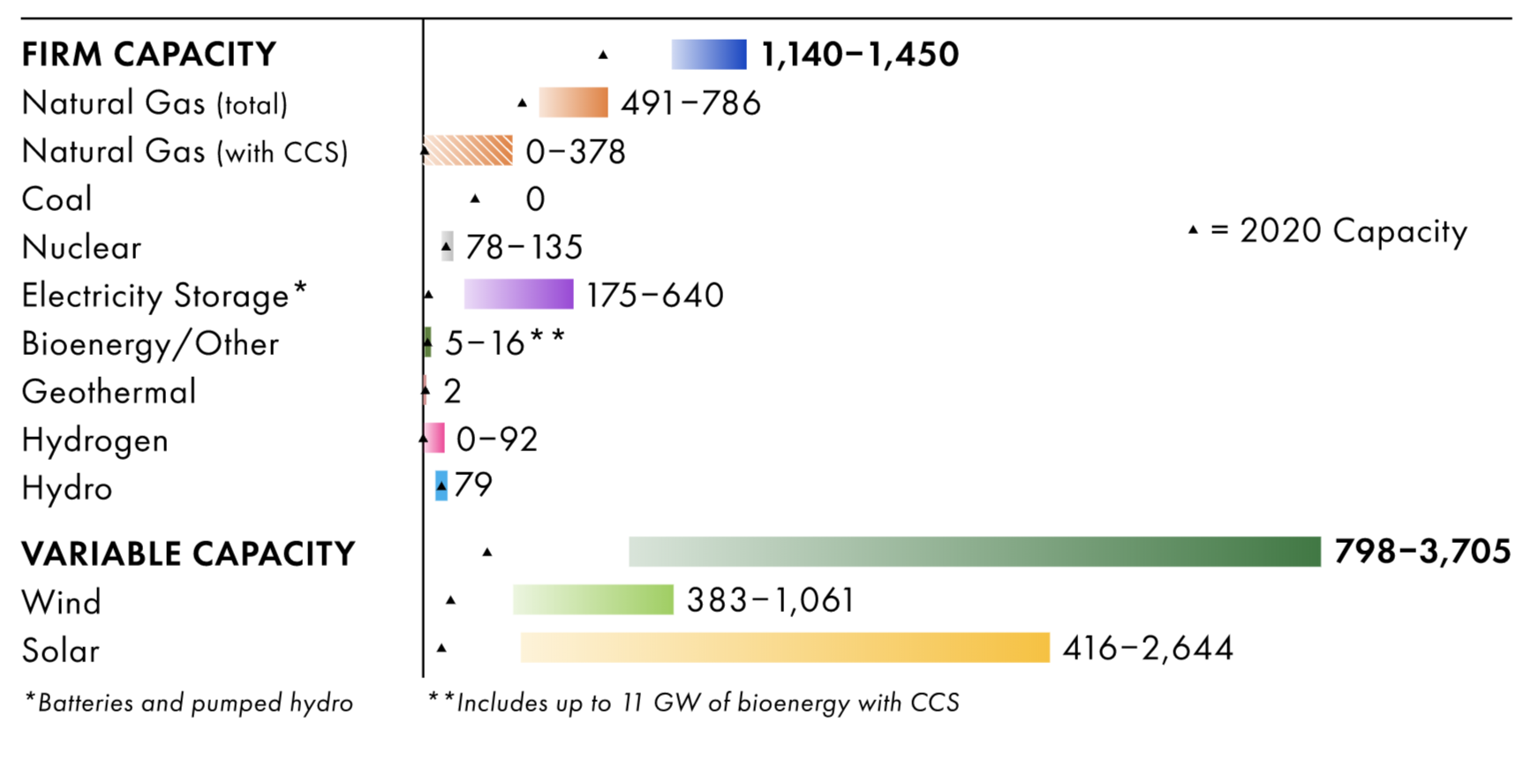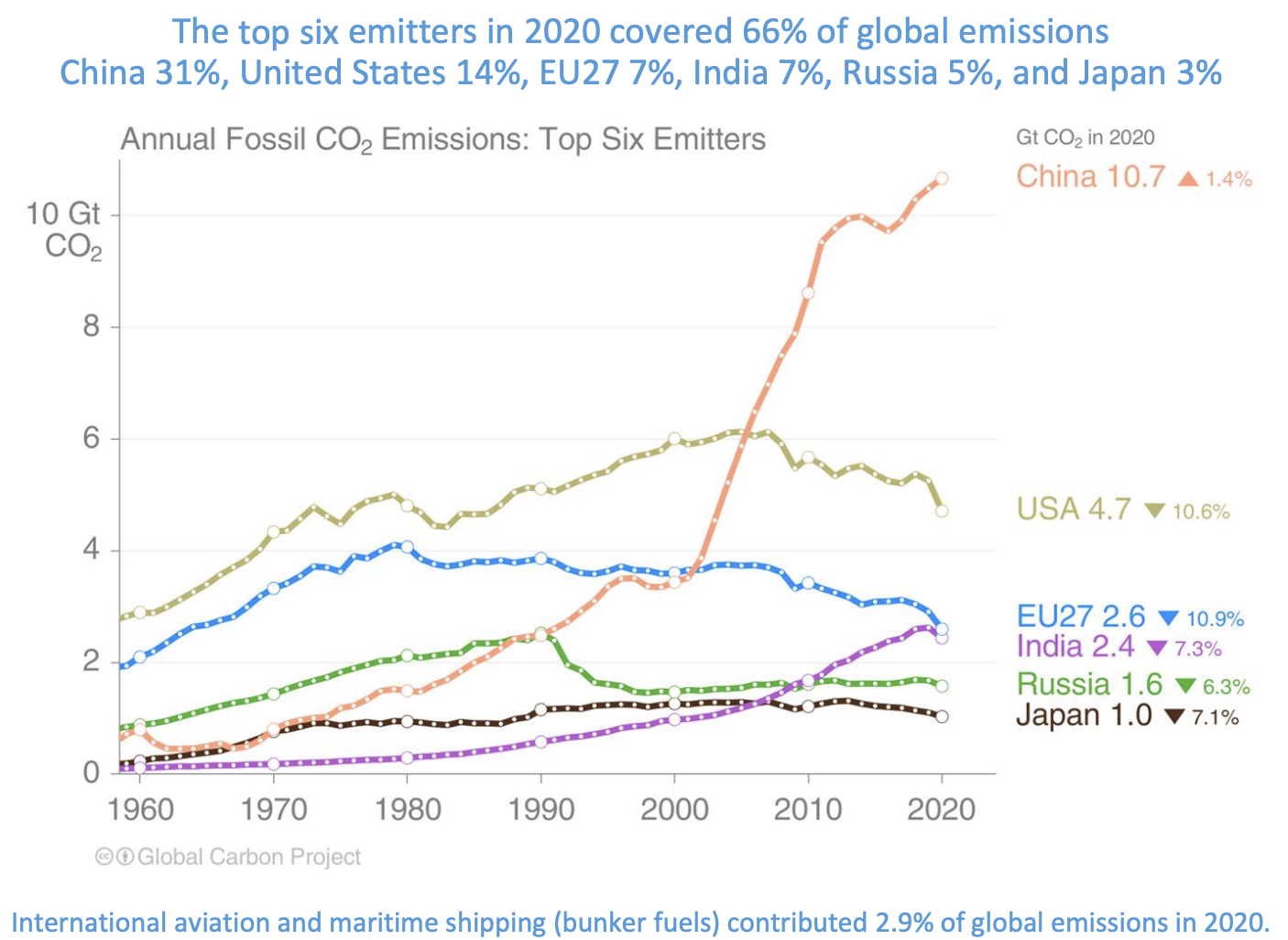If the United States is to reach President Joe Biden’s 2050 net zero carbon economy goals, it will need to increase its electricity generation capacity by as much as 480 percent to comply with the Paris Climate Accord. According to a recent report, firm capacity should increase by 300 to 400 gigawatts from today’s level of 850 gigawatts and intermittent wind and solar capacity should at least quadruple from the current 200 gigawatts. The study, jointly released by the Electric Power Research Institute and GTI Energy, found that the United States would need to build its firm capacity to between 1,140 gigawatts and 1,450 gigawatts and its wind and solar capacity to between 800 gigawatts and 3,700 gigawatts. The new capacity would, in part, replace existing capacity, which does not need to be retired, but Biden’s net zero carbon goals mean that existing plants will be shuttered and replaced by new politically correct capacity that U.S. consumers and taxpayers would be funding. So, not only are fuel costs going up based on Biden’s energy policies, but electric costs will skyrocket as all the new generating capacity is brought online. Americans will be asked to divert enormous sums to meet Biden’s goals, which have never been legislatively confirmed.
The Study
The study analyzed a number of different scenarios, depending on technology availability and cost. Based on the various scenarios, total new capacity in the electric sector would need to range from 1,650 gigawatts to 4,860 gigawatts (160 percent to 480 percent of today’s levels). According to the study, achieving economy-wide net-zero carbon dioxide emissions while attempting to maintain reliability requires a broad set of low-carbon technologies. Firm capacity resources, which are needed to backup intermittent resources, include nuclear, geothermal, hydrogen, hydroelectricity, bioenergy (with and without carbon capture), natural gas with or without carbon capture, and electricity storage technologies (for example, battery storage, pumped hydro, and compressed air energy storage).
2050 Electric Generation Capacity by Resource

The study notes that electricity from existing nuclear provides essential firm capacity in a net-zero energy system. In a scenario in which carbon capture and sequestration (CCS) is restricted, new advanced nuclear technologies, such as small modular reactors, provide about 60 gigawatts of generating capacity as a carbon-free baseload option by 2050.
In all scenarios, new gas- and/or hydrogen-fueled electric generating capacity plays a critical role in providing resource adequacy and flexibility for reliable power generation. New natural gas plants with CCS emerge as a key firm capacity option for the electric sector, providing up to 33 percent of generation, and, potentially, a significant portion of hydrogen and ammonia production.
Natural gas infrastructure plays a crucial role in providing firm capacity for a transitioning power sector and delivering low-carbon fuel to industry and buildings, particularly in colder climates. The composition of delivered gas varies by scenario and may include a blend of fossil, renewable and synthetic natural gas, and hydrogen. U.S. natural gas consumption could remain at levels similar to today, even in a net-zero energy future. With higher natural gas prices, pipeline gas consumption declines to around 15 quadrillion Btu, about half of today’s level. Without CCS, renewable and synthetic natural gas can substitute for fossil supply as the economy-wide emissions target approaches zero; in this case, pipeline gas consumption decreases to around 17 percent of today’s level. Even with lower volumes of delivered gas, pipeline capacity requirements remain to serve peak demands.
Hydrogen’s use as a low-carbon fuel is projected to increase, whether through fuel cell vehicles, blending with the natural gas supply to support needs in buildings, or through direct use for process heating in industries. Some studies suggest the cost of heating a home would double if hydrogen were required instead of natural gas. The roles of hydrogen and hydrogen-derived fuels expand significantly if CCS and forestation are limited, increasing clean electricity generation by around 4,000 Terawatt hours to support production from electrolysis—as much as the total U.S. electricity generation today.
Continued expansion and modernization of electric transmission and distribution (T&D) infrastructure are essential to support increased integration of renewables, electrification, and flexible demand-side resources, as well as enhance reliability and resilience during the energy transition. Electric T&D investments increase over time in all scenarios.
Conclusion
Getting to a net zero economy requires a massive change in the U.S. electric system by both replacing much of our existing generating capacity and building new generating capacity to meet all the new electricity demands from supplying power for electric vehicles to meeting the nation’s heating demands. Along with new generating capacity requirements are additional transmission and distribution requirements as our aging grid will need massive upgrading plus new lines to bring power from remote areas where wind and solar capacity can find the sun and the wind. The undertaking is massive, will be expensive, and likely unreliable as goals are being pushed without much forethought to cost, availability, and feasibility. The massive increase in U.S. generating capacity in less than 3 decades from between 1,940 to 5,150 gigawatts, compared to 1,080 gigawatts today is simply mind-boggling. The costs will be staggering, and paid for by consumers and a diversion of the nation’s wealth.
*This article was adapted from content originally published by the Institute for Energy Research.



